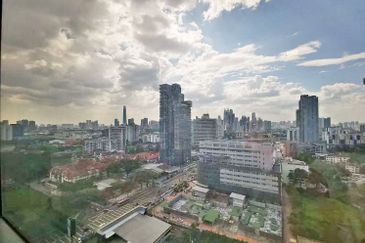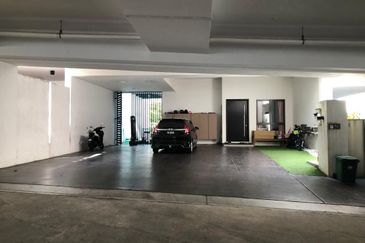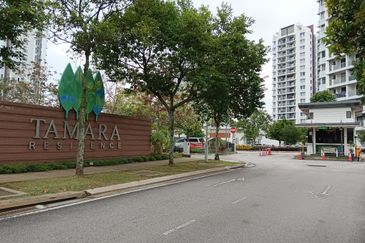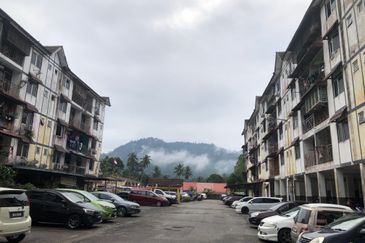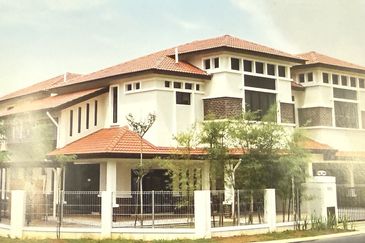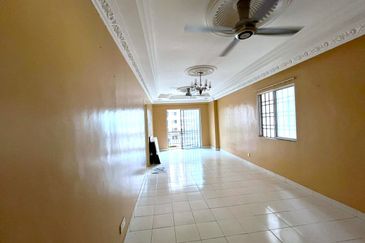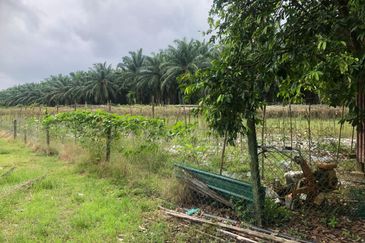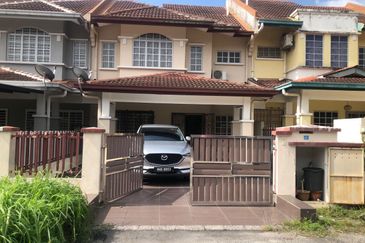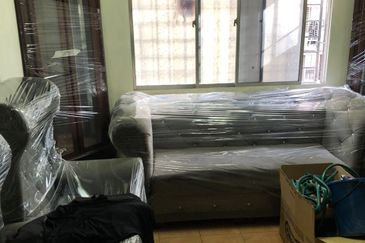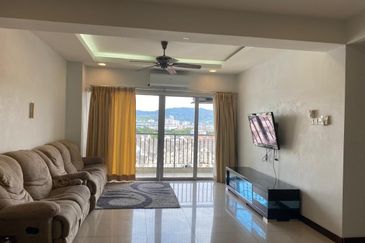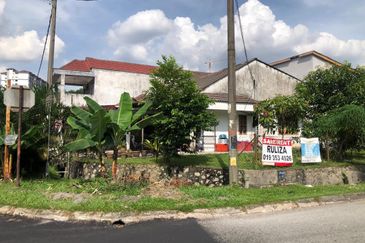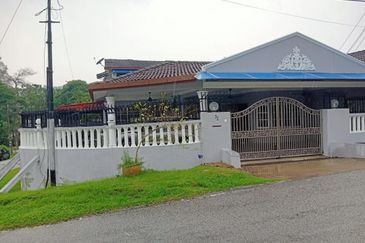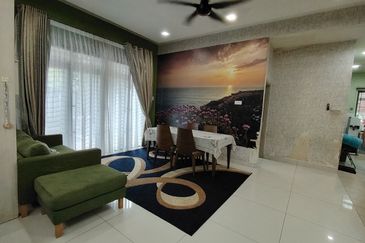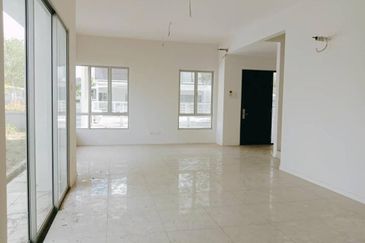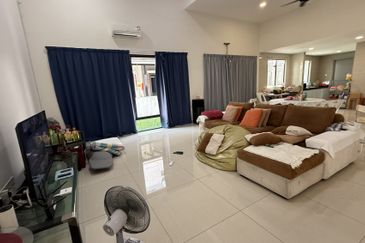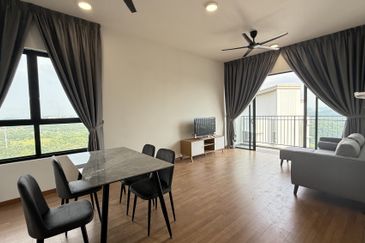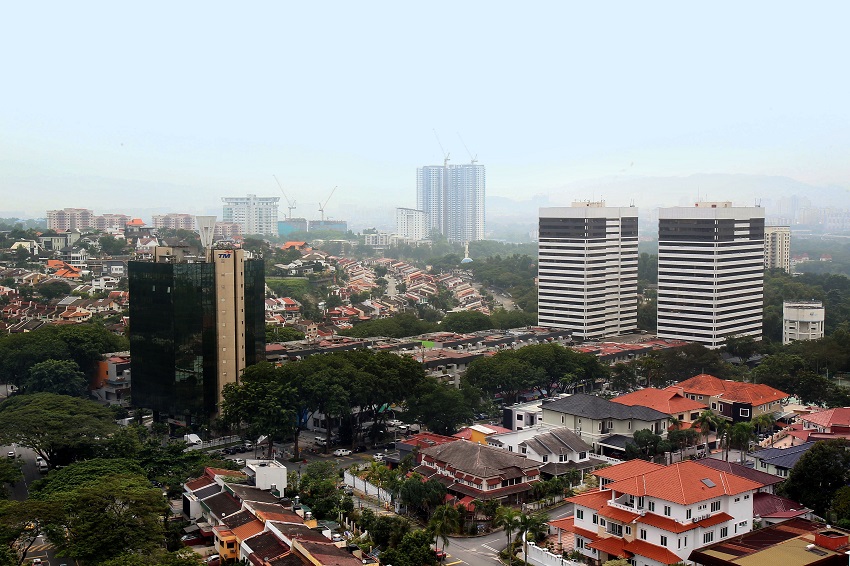
VIEW VIDEO
DEVELOPED in the 1970s as an upper-middle class residential enclave in Kuala Lumpur, Taman Desa mainly offered landed homes in the early days. Then the Faber Group, among the main developers in the area, gradually introduced mid to high-end non-landed residences in the 1980s.
Still lush with mature trees, the residential neighbourhood remains attractive to property developers, homebuyers and property investors due to its central location near Old Klang Road, a stone’s throw away from Mid Valley City and Kuala Lumpur city centre.
 Taman Desa also enjoys good connectivity to major roads such as Old Klang Road and highways such as the Smart Tunnel, North-South Highway, Maju Expressway, KL-Seremban Highway, New Pantai Expressway, Federal Highway, KL Middle Ring Road 2 and the Cheras-Kajang Expressway.
Taman Desa also enjoys good connectivity to major roads such as Old Klang Road and highways such as the Smart Tunnel, North-South Highway, Maju Expressway, KL-Seremban Highway, New Pantai Expressway, Federal Highway, KL Middle Ring Road 2 and the Cheras-Kajang Expressway.
According to DTZ Nawawi Tie Leung Sdn Bhd managing director Eddy Wong, residents in Taman Desa comprise mostly higher-income business owners and professionals. Unsurprisingly, it is an area which is popular among property developers and investors.
Wong says people who choose to live here like the central location, good connectivity and abundant neighbourhood amenities and facilities, including the Taman Desa Medical Centre and a large park at the heart of Taman Desa.
Savills (Malaysia) Sdn Bhd deputy managing director Paul Khong notes that Taman Desa’s “strategic location in suburban KL and its convenient access to major roads and expressways are its main selling points”.
Noting that many properties here are of freehold tenure, he adds that, “Many working professionals and young families stay here due to its good location, with close proximity to malls and highways, while neighbourhood amenities are well-established.”
A large proportion of residents are Chinese business owners and professionals, and the past several years have seen an increasing number of owner-occupiers here, says Wong.
Khong agrees that the neighbourhood is home to a large proportion of owner-occupiers but notes that there are some Japanese and Korean tenants in the area as well.
Lack of new completions fuels demand
The non-landed residential segment in Taman Desa is currently quite limited, Khong notes. However, he says there will be 1,388 strata units entering the market through UOA Group’s Desa Green development in 2016. According to him, the current total supply of new of condominiums is around 7,000 units, while incoming supply will largely be focused on Old Klang Road.
The first two towers at Desa Green were reportedly launched at prices over RM600 psf, and the third tower, almost RM800 psf.
The latest addition to the non-landed residential segment this year was 24 units at Desa Eight luxury condominium also by UOA. Prior to that, Papillon Desahill by Zeus-TNB Properties Sdn Bhd was completed in 2011.
Given the lack of new completions between 2012 and 2014, values of non-landed homes in the area have been appreciating steadily.
Based on analysis by theedgeproperty.com, prices of non-landed properties in Taman Desa achieved an average transacted price psf of RM479 in the third quarter of 2014 (3Q2014), up 8.7% y-o-y, while the average transacted price per unit was RM546,000. In the preceding year, the average transacted price of non-landed properties in Taman Desa showed a 12.4% growth y-o-y. (See Chart 1).
All non-landed residential projects surveyed charted strong annual gains in average price psf in the 12 months to September 2014, according to theedgeproperty.com.
According to Wong, current supply is limited and the few units being offered for sale on the secondary market are usually snapped up quickly.
The most expensive project is Papillon Desahill, with an average transacted price per unit of RM1.46 million. (See Chart 2). It has an average price of RM741 psf, at least 25% higher than other properties in the area, according to theedgeproperty.com. Completed in 2011, the luxury condominium offers units of between 1,711 sq ft and 3,681 sq ft. Based on theedgeproperty.com research, units at Papillon Desahill rarely transact for less than RM1 million, and during the review period, a penthouse unit was sold for RM2.03 million.
 The second-most expensive condominium is 1 Desa Residence, with an average transacted price of RM1.196 million. Completed in 2007, 1 Desa Residence is a high-end condominium with units of 2,142 sq ft and above. It was completed about eight years ago. Research of transaction data by theedgeproperty.com found two sales recorded last May at prices slightly below market value.
The second-most expensive condominium is 1 Desa Residence, with an average transacted price of RM1.196 million. Completed in 2007, 1 Desa Residence is a high-end condominium with units of 2,142 sq ft and above. It was completed about eight years ago. Research of transaction data by theedgeproperty.com found two sales recorded last May at prices slightly below market value.
The least expensive projects are led by low-cost apartments and flats clustered together just off Jalan Desa in the south, namely Iris Apartment at RM187,000 or RM301 psf, Danau Murni at RM272,000 or RM377 psf and the Abadi Indah Apartments at RM294,000 or RM359 psf.
Units at Danau Murni are compact, measuring 714 sq ft. However, with sale prices ranging from RM200,000 to RM333,000 during the review period, theedgeproperty.com notes that the condominium appears very reasonably priced, offering a decent yet affordable option for living close to the city centre.
Strong capital appreciation
The highest growth in capital values is seen at Danau Impian, which saw a 26.2% increase to RM474 psf. A 3-bedroom unit here is between 918 sq ft and 1,000 sq ft, while its price quantum per unit falls within RM400,000 to RM470,000, still an accessible pricing level for the mass market. The development is within walking distance of shops and eateries.
Also displaying significant gains is Abadi Indah Apartments, with an increase in average price of 24.3% to RM359 psf, albeit from a low base.

Interestingly, fairly dated developments completed in the 1980s and 1990s, such as Faber Ria (up 23.9% to RM528 psf), OBD Garden Tower (up 20.4% to RM593 psf) and Danau Permai Condominium (up 19.7% to RM563 psf) continue to enjoy good capital appreciation despite their age.
Khong has seen capital appreciation of between 50% and 150% in the various projects in Taman Desa, which he says is due to location, upkeep and maintenance, and actual demand from buyers. He notes that this neighbourhood has achieved an average 15% to 20% price increment per annum over the last five years (2010 to 2014/2015). (See Chart 3). According to Khong, “The earlier stock was trading at rather low prices of just over RM300 psf. Due to the overall price increase in the property market and cost of construction, capital values have crept up to more acceptable levels.”
Newer projects in the vicinity such as 9 Seputeh and Desa Green have set a higher base price for this neighbourhood, he adds. Secondary market price growth, as well as new launches priced at a premium, show demand from buyers.
According to theedegeproperty.com’s analysis, in the 12 months to 3Q2014, the RM500,001 to RM600,000 price bracket accounted for the largest market share of transactions at 22.8%, with the second-largest being the RM600,001 to RM700,000 bracket, accounting for 15.5%. Some 7.3% of transactions were for homes over RM1 million.

On a psf basis, a majority or 54.9% of transactions fell within the RM401-RM600 psf range during the same period. Secondary market transactions had yet to breach the RM1,000 psf mark in the review period.
Although prices of units in Taman Desa on a psf basis seem to fall in the mid-end segment, theedgeproperty.com notes that unit sizes in the area tend to be quite large, hence the overall price falls in the upper-middle class bracket.
“The market is of course a little soft currently in terms of sentiment but the market outlook remains positive due to the area’s location, connectivity and ready access to amenities,” notes Wong.
According to theedgeproperty.com, rental yields in Taman Desa are quite good, with most condominiums and apartments returning yields of above 5%. Based on asking rentals as at June this year, Danau Murni appears to generate the highest asking rental yields, at 6.1%. It has a low capital price, at an average transacted price of RM377 psf, with an asking monthly rental of RM1.91 psf or just under RM1,400 for a typical unit. Its compact unit size translates into higher rents on a psf basis, theedgeproperty.com notes. The development is located within walking distance of shops. Other projects generating good asking rental yields are Iris Apartment and Abadi Indah Apartments, at 5.9% and 5.7% respectively.

Next change
Being one of the oldest and historically significant roads — it was the only link between KL and Port Klang several decades ago — Old Klang Road has been upgraded to serve the neighbourhood better.
According to Khong, an upcoming bridge near the 9 Seputeh development (by MRCB Group) will link Old Klang Road to the NPE and extend its connectivity. The upcoming monorail extension from Brickfields to Bandar Sunway, passing Old Klang road and Taman Desa, will further uplift the neighbourhood by improving public transport.
“Any redevelopment projects undertaken in the vicinity will also rejuvenate this ageing neighbourhood further,” he adds.
Khong notes there are still pockets of empty land parcels in the vicinity, which may see a few new projects in the near future.

“Given its strategic location between KL and PJ and its proximity to Mid Valley, this area should still be able to take some new developments if local market conditions still permit. [Moreover], this area still carries a freehold title,” he says.
Local developer Law Developments Sdn Bhd is planning a 48-storey condominium with 148 units and a 13-storey annexe block with a main lobby, car park and other facilities. This project is reported to have met with opposition, especially by worried residents of Casa Desa. They fear that the project, located 16 metres from their homes and on a hill slope, might pose a safety hazard to the structural integrity of their buildings.

Nearby, Old Klang Road is currently in the limelight for redevelopment, with projects such as 9 Seputeh, Avantas Residence (by CPI Land Sdn Bhd), The Petalz and The Grainz (both by Exsim Group of Companies), and Verve Suites@KL South (by Bukit Kiara Properties Sdn Bhd).
Meanwhile, DTZ’s Wong adds that Taman Desa could do with more parking provision at the commercial areas.
The property consultant’s outlook for Taman Desa remains positive, as properties in the neighbourhood are in good demand due to its central location, accessibility and maturity. On average, property prices have doubled since five years ago, a reflection of its popularity.
Landed homes in Taman Desa
In 1976, Faber Group Bhd (now known as UEM Edgenta Bhd, a 70%-owned subsidiary of UEM Group Bhd) first built around 110 semidees and 120 bungalow lots in Taman Desa. Two years later, it introduced 578 units of 2-storey terraced houses. This was followed by a number of apartment projects such as Faber Ria, Faber Heights, Faber Indah, Danau Idaman (a joint venture with Kuala Lumpur City Hall), Danau Impian, Danau Permai, and Tiara Faber.
There are currently about 1,900 units of landed homes in Taman Desa and Taman Bukit Desa. Some of the later landed projects include 64 units of 3-storey linked semidees at Danau Villa (in 2006), 40 units of 3 or 3½ storey semidees and six bungalows at Armada Villa (2013), and 31 units of 4-storey linked bungalows and three units of 4 storey bungalows at Prima Villa (2014). Danau Villa and Armada Villa are joint venture projects between Faber Group and KL City Hall.
Data courtesy of Savills (Malaysia) Sdn Bhd.
This article first appeared in property+, a section of the digitaledge DAILY, on Sept 11, 2015. Download property+ for free here.
TOP PICKS BY EDGEPROP
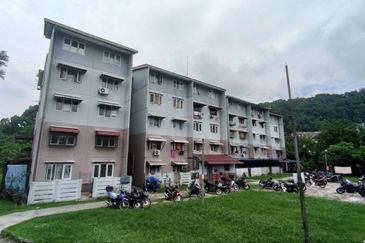
Kelompok Bunga Raya
Taman Setiawangsa, Kuala Lumpur




